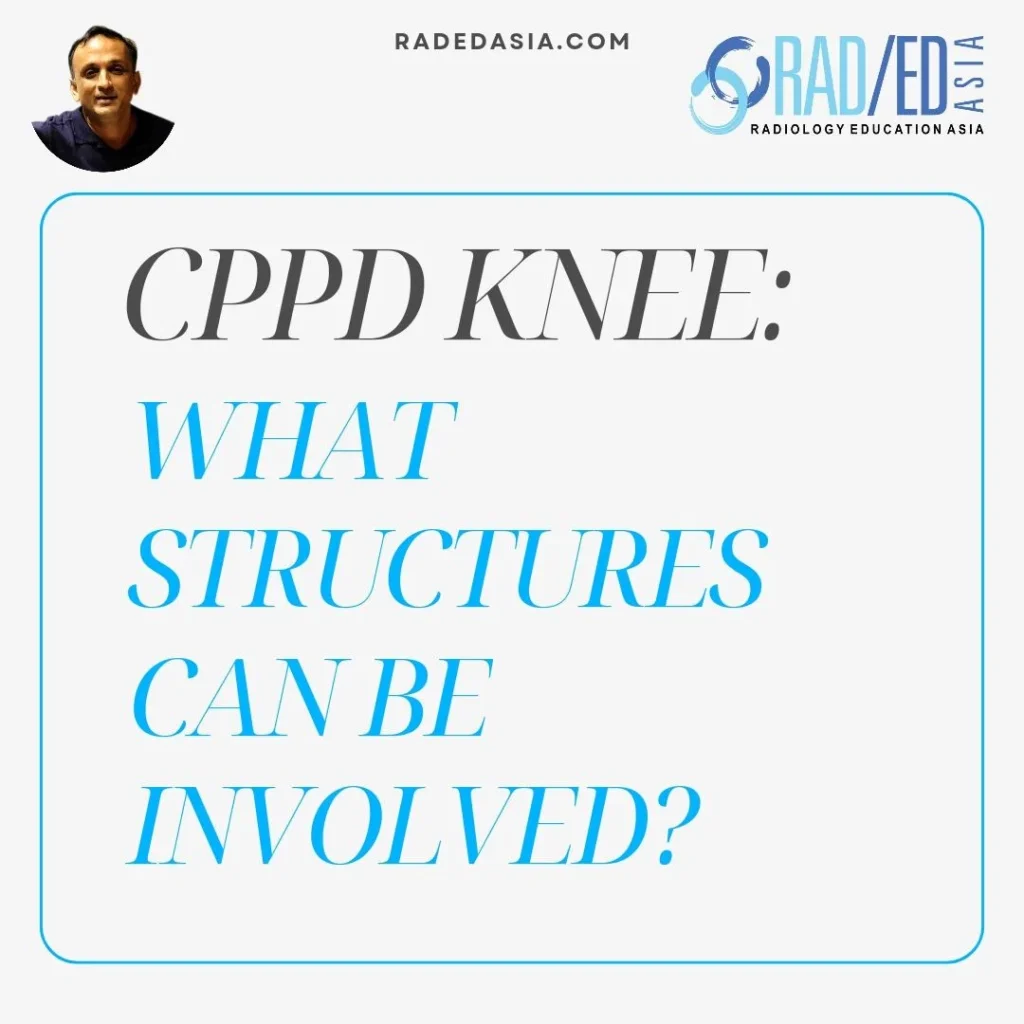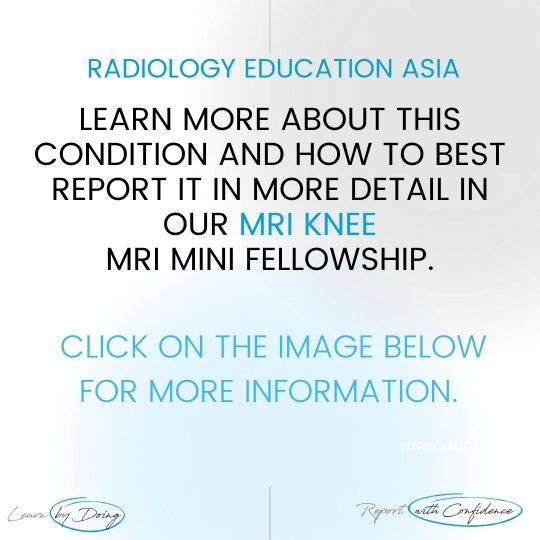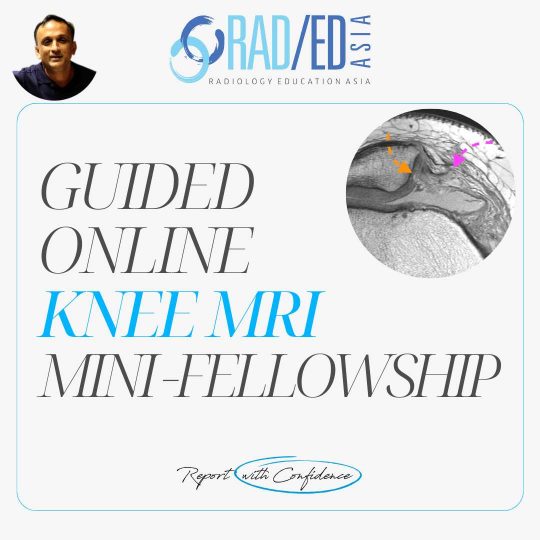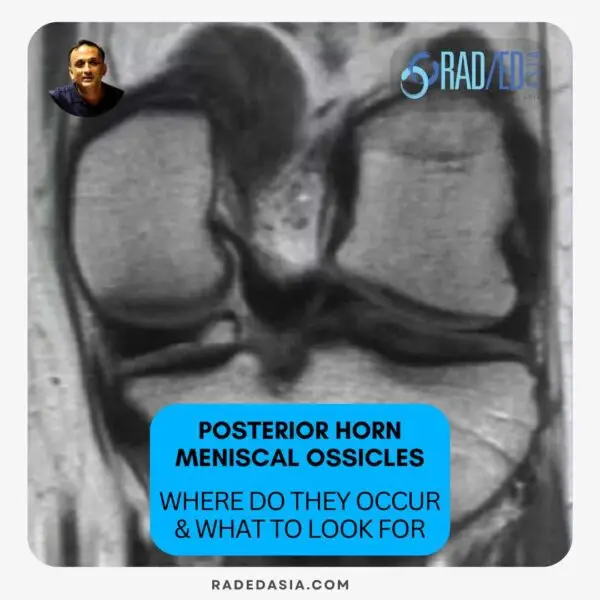This site is intended for Medical Professions only. Use of this site is governed by our Terms of Service and Privacy Statement which can be found by clicking on the links. Please accept before proceeding to the website.

CPPD PSEUDOGOUT KNEE: RADIOLOGY IMAGING FINDINGS
CPPD & PSEUDOGOUT OF KNEE
Calcium pyrophosphate deposition (CPPD) is a common chronic arthropathy caused by the presence of calcium pyrophosphate (CPP) deposits in joint and surrounding tissues.

CPPD: WHAT IS IT?
CPPD KNEE: COMMON SITES OF INVOLVEMENT MENISCUS
CPPD KNEE: COMMON SITES OF INVOLVEMENT CARTILAGE
- CPPD in the knee most commonly affects the menisci and articular cartilage.
- Two types of articular cartilage involvement can be seen either on their own or together.
- Lining the surface of the cartilage.
- Within the cartilage.
- One is this linear deposition of calcium pyrophosphate on the surface of the cartilage like icing on a cake.
- The other form of chondrocalcinosis is calcification within the cartilage which has a more diffuse and less linear appearance.
- Characteristically there can be narrowing of the patellofemoral joint and normal width of the medial and lateral compartments.
CPPD KNEE: LESS COMMON SITES
- CPP crystal deposition can also occur in ligaments, tendons, synovium and the capsule and can be seen in any soft tissue in and around the knee.
- In the video we demonstrate CPPD of the ACL, PCL and popliteus and gastrocnemius tendons.
- Not common to see but the likelihood increases with severity of involvement.
- The video below demonstrates the common and not so common sites of involvement of CPPD in the knee.
WHICH STRUCTURES ARE INVOLVED: VIEW VIDEO
VIDEO TRANSCRIPT
FULL VIDEO TRANSCRIPT
Introduction to Calcium Pyrophosphate Deposition Disease (CPPD)
CPPD or calcium pyrophosphate deposition disease or Pseudogout as it’s also called. It’s actually pretty common and we can see it in various structures around the body, but the knee is one that’s particularly involved and it’s fairly common for us to see.
Common Locations of CPPD Deposition in the Knee
So, in this video, we’re going to look at what are the common. Locations within the knee that we can see CPPD deposition. And some of the less common structures also that are involved.
Calcification in Meniscus
One of the most common would be the menisci and we get deposition of calcium pyrophosphate. Within the meniscus itself and, how we know that is because we have this triangular appearance. So, it takes on the form of the meniscus. And we get calcification of varying degrees within the meniscus. And that gives us the outline of the meniscus. Here, this is the same patient. So, we’ve got this calcification within the meniscus that triangular appearance.
Calcification in Tendons
We also have calcification in the region of the popliteus tendon. So, this has popliteus tendon calcification, we will come into the tendons that can be involved in just a moment.
Chondrocalcinosis: Two Forms of Deposition
The other very common site is cartilage. And with cartilage you can see two forms of deposition. One is this linear deposition of calcium pyrophosphate on the surface of the cartilage. It’s almost like it’s icing on a cake. So, we have these thin linear areas of increased density on the surface of cartilage. The thing that can be confused with that is capsular calcification. So, this is calcification within the capsule. Just it’s a little bit more peripheral. Often you will see a second line in here, which is the calcium within the cartilage itself. But capsular cartilage tends to be more peripheral because that’s where the capsule is. And if you’re looking on a CT, you can follow the capsule, you can actually see it and here it’s not windowed properly for the capsule, but this is the noncalcified capsule here.
The other form of chondrocalcinosis is actually calcification within the cartilage. The image we saw previously was on the surface of the cartilage. And here we have calcification that’s actually within the cartilage itself. So, we’ve got two forms of chondrocalcinosis that linear icing type appearance, or this more diffused appearance within cartilage itself, and you can get them occurring individually or they can occur together. In this patient, we can again, see that we have meniscal calcification. And this is also within the popliteus tendon.
Uncommon Locations
More uncommon location and these are within ACL, and this is PCL, and this is pretty uncommon to see. Can occur really within any of the soft tissue structures around the knee. This is the same patient who had the ACL and PCL involvement. And it’s just a reflection of a severity in this patient. So again, this is not a common thing to see.
What have we covered?
So, what we’ve covered is. The common sites of involvement within the knee of calcium pyrophosphate deposition disease Most commonly you’re going to see it within the cartilage menisci and adjacent tendons particularly popliteus and gastrocnemius and if it’s severe enough you’ll see involvement of other structures. But generally, the most common location is going to be within the cartilage and menisci and the adjacent popliteus and gastrocnemius tendon.
If your Browser is blocking the video, Please Click HERE to view it on our YouTube channel.
If you find the video helpful, please subscribe to the channel.
Our CPD & Learning Partners
- Join our WhatsApp RadEdAsia community for regular educational posts at this link: https://bit.ly/radedasiacommunity
- Get our weekly email with all our educational posts: https://bit.ly/whathappendthisweek











